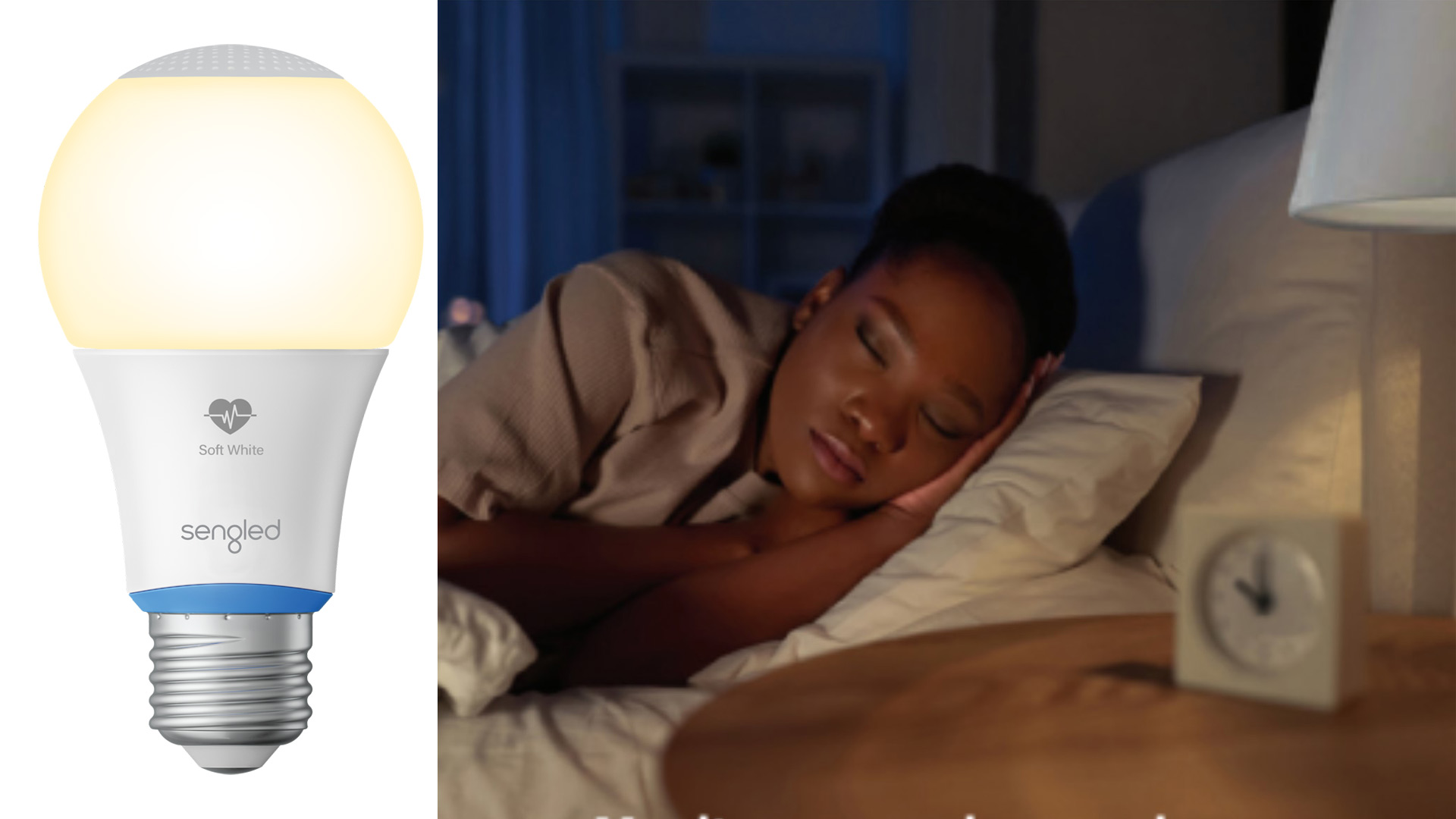Holy future: These smart lights use radar to track your health and movements
Sengled's Smart Health Monitoring Lights monitor your vitals, including sleep and heartrate

If you’ve fallen and you can’t get up, you're sleeping poorly, or your heart is racing, there’s a Life A…er… lightbulb that can look out for you, let you know what’s up, and even call for help.
Not since the day Thomas Edison flipped a switch and said, “Look at me, I too have figured out how to make a long-lasting incandescent lightbulb -- and I'll market it better than anyone else,” have we seen this kind of bulb innovation. The Sengled Smart Health Monitoring Light, unveiled at CES 2022, is not just a smart bulb that connects to your Alexa or Google Assistant smart network, it’s a human vitals detection system.
The LED bulb uses a sophisticated Frequency-Modulated Continuous Wave (FMCW) radar to map your room (or home if you have multiple bulbs) and detect its occupants.
FMCW is a low-cost, low-powered radar system operating in the 2.4 GHz range, which has already proven effective in movement, velocity, and range (location) detection. It’s also capable of, for instance, detecting individual occupants in a minivan, and monitoring vital signs like heart rate and breathing.
Sengled combines that capability with its own algorithmic mix to, according to the company, detect sleep quality, breathing, heart rate, and motion of occupants in your home. The bulb uses the radar to detect a fall, information that's delivered to the Sengled app, which can reach out to one of your contacts for help.
Sengled representatives told TechRadar that many of these detection features will work best if there are multiple Sengled Smart Health Monitoring Lights in the home. The more you have the better the FMCW radar mesh.
For now, all the vital sign information is contained to the Sengled app, though the company plans to work with third-party health apps. We’d hope that Apple Health is on that list.
Sign up for breaking news, reviews, opinion, top tech deals, and more.
While you can use the app to see all your health metrics (assuming this smart LED light works as advertised), the Smart Health Monitoring Light can, in a more passive way, let you know if something is amiss. You can set it to change colors if one of your core vital signs falls outside preset parameters, for example. Perhaps it can turn a warning orange to tell you that your movement has changed and you’re in greater danger of falling.
These bulbs also support Wi-Fi to connect to your favorite digital assistant: Alexa or Google Assistant but not, currently, Apple’s HomeKit.
Sengled existing LED smart bulbs cost around $15 apiece, so we’re guessing that one featuring built-in radar will be considerably more expensive. And since you really need multiple bulbs to achieve the full effect of the health-monitoring system, this could be quite a smart home investment.
No official word on pricing, though, as the Smart Health Monitoring Light isn’t scheduled to ship until Q4 22. In the meantime, you’ll have to monitor your sleep and motion the old fashion way.
- Check out all of TechRadar's CES 2022 coverage. We're bringing you all the breaking tech news and launches, everything from 8K TVs and foldable displays to new phones, laptops and smart home gadgets.

A 38-year industry veteran and award-winning journalist, Lance has covered technology since PCs were the size of suitcases and “on line” meant “waiting.” He’s a former Lifewire Editor-in-Chief, Mashable Editor-in-Chief, and, before that, Editor in Chief of PCMag.com and Senior Vice President of Content for Ziff Davis, Inc. He also wrote a popular, weekly tech column for Medium called The Upgrade.
Lance Ulanoff makes frequent appearances on national, international, and local news programs including Live with Kelly and Mark, the Today Show, Good Morning America, CNBC, CNN, and the BBC.